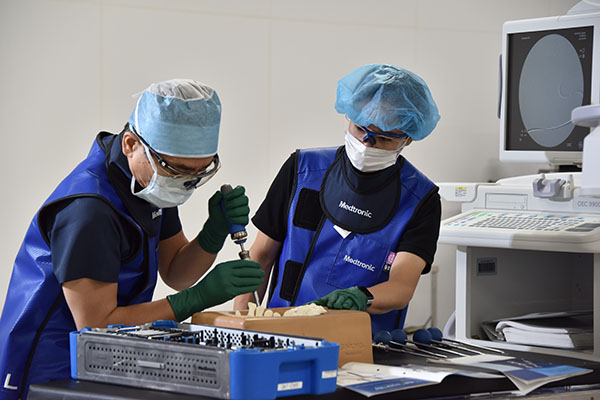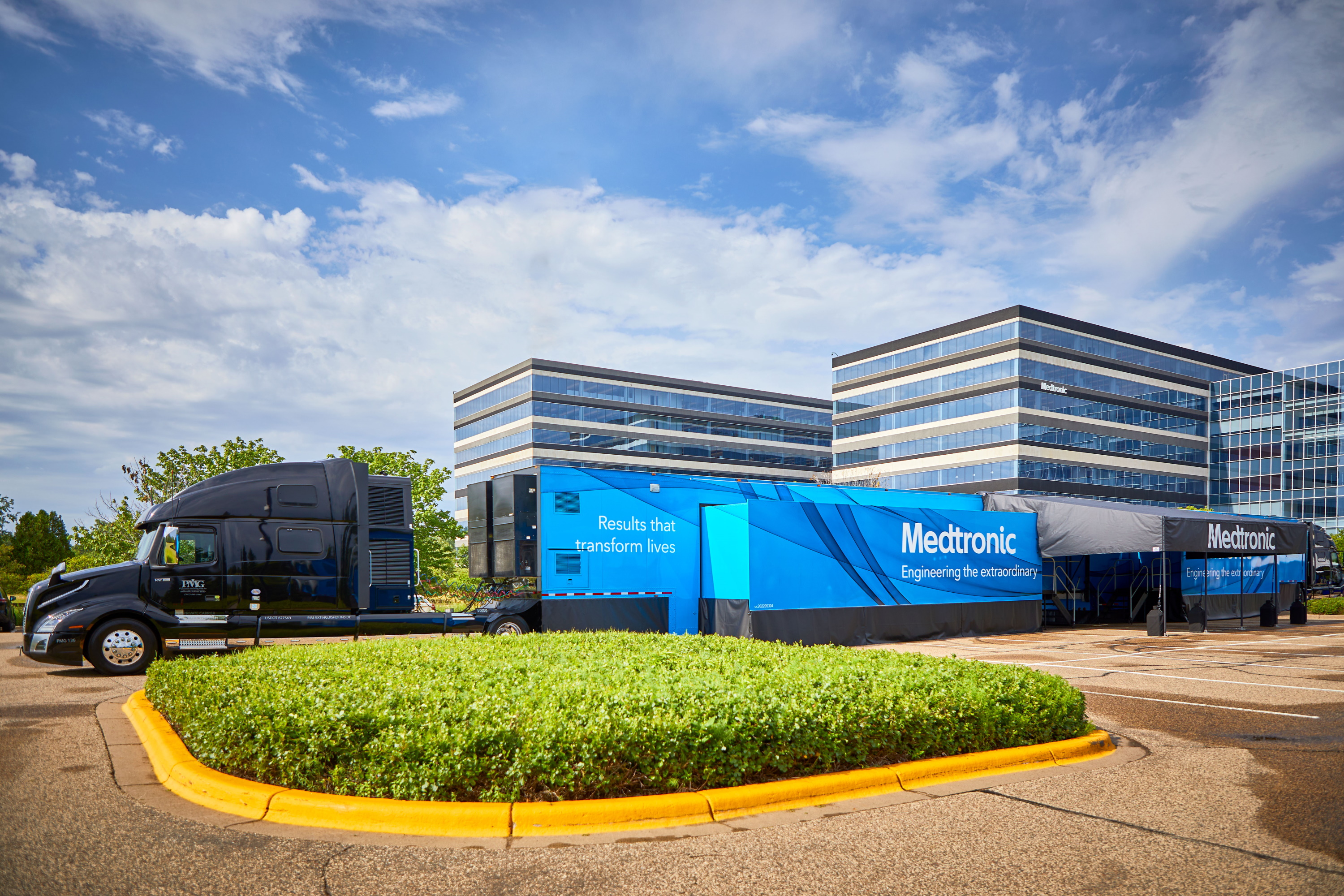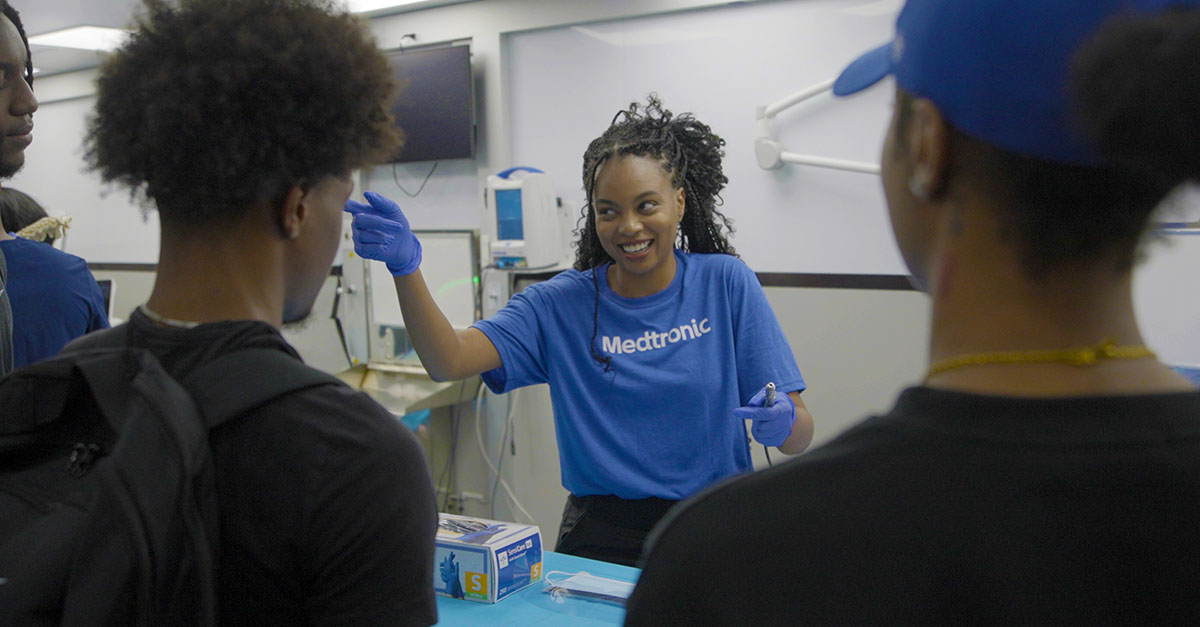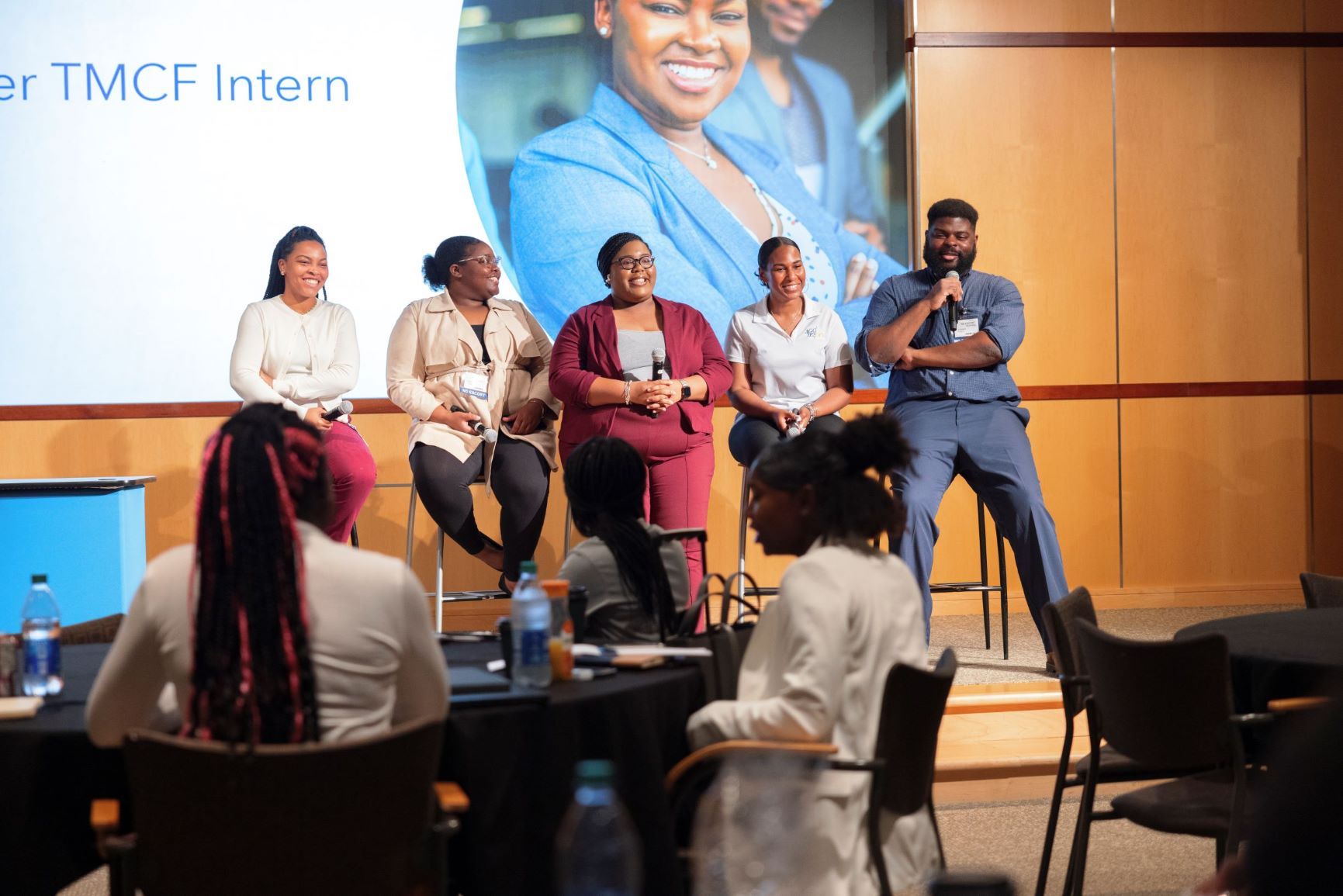Surgery is changing – so is the way we’re teaching it
Virtual reality technology – and even semi-trucks – are transforming medical education and training
Not that long ago, doctors learned how to perform medical procedures in a hospital conference room or lab. Extraordinary note-taking abilities and memorization were essential.
But technology has radically altered the way clinicians learn medical procedures. Today, doctors can learn the latest surgical technique by putting on a virtual reality headset and watching a simulation. In some cases, advanced computer models are replacing the need for human cadavers.
And training doesn’t have to take place in a lab or hospital. It can be delivered in Mobile Labs, our fleet of semi-trucks that are built to simulate operating rooms.

By offering education and training to clinicians, we are helping improve access to healthcare all over the world. In the past three years, we educated 993,000 healthcare professionals. Our goal for the next three years is to educate 1.2 million healthcare professionals.
“Clinicians have to be life-long learners to deliver high-quality healthcare that helps patients live the lives they want,” said Susan Haider, senior director of global innovation centers, training, and events at Medtronic. “At Medtronic, we are committed to meeting healthcare professionals — wherever they are — to deliver training and education in innovative ways that reflect the changing landscape of technology.”
Up close and virtual
When we develop a healthcare technology, training clinicians how to use that product safely and effectively is a critical step in the journey.
While nothing will replace hands-on training for clinicians, advances in digital technologies are opening a new world of educational opportunities.
For example, doctors in one part of the world can now use a virtual reality headset to teach residents in another how to perform a complex spinal surgery using a surgical robot. By bringing a virtual training to clinicians, they can learn whenever they have time, which helps them prioritize what matters most: patients.
That flexibility is a cornerstone of our Touch Surgery™ Simulations, which are designed to help clinicians learn surgical and medical procedures, all accessible through a free app.
Creating these realistic surgical simulations requires a great deal of research and requires visual artists to watch hours of surgery footage so they can make digitally recreated organs look as realistic as possible. On average, it takes about six months to create each simulation which includes everything from a mastectomy to a total knee replacement.
Beyond simulations, surgeons are also finding value in surgical video for coaching on procedural techniques. This practice is like how elite athletes use video to analyze and improve their performance.
Paging doctors in the parking lot
Clinicians don’t always have time to travel for continuing education training. That’s why we bring training directly to the clinicians with our fleet of Mobile Labs.
Last fiscal year, we trained more than 2,000 healthcare providers (HCP’s) in 38 states and recently began operating trucks in Japan and Europe.
Not only do clinicians have access to state-of-the-art technology inside Mobile Labs, they can also earn continuing medical education credits.
“Medtronic Mobile Labs offers healthcare providers all the benefits of hands-on training while helping with time management,” said Melissa Robson, director of local HCP Education at Medtronic. “The less time they are away from their practice, the better it is for everyone, especially for their patients.”
Hands-on training is here to stay
At the Physiological Research Lab, not far from our operational headquarters in Minnesota, clinicians from all over the world come to the facility to learn proper surgical techniques for Medtronic products and therapies. There, they have access to innovative surgical tools, sensors, and robotic-assisted surgical systems.

But not every clinician has time to travel to Minnesota. That’s why the company has a global network of facilities dedicated to supporting clinician training and education. These are known as Medtronic Innovation Centers and are in major cities around the world including Seoul, Singapore, Tokyo, Chengdu, and Istanbul.
At these state-of-the-art centers, clinicians can learn the latest surgical techniques using technology that isn’t always available at local hospitals and centers.
When clinicians are trained in the latest surgical techniques, they can teach others, expanding the reach of healthcare to patients around the world. By investing in clinician education and development, we can strive for equitable access to quality healthcare, especially in communities that lack sufficient resources.
“We are driven to deliver an excellent training experience to all healthcare professionals who walk through our doors, or in many cases, take an online class,” Haider said. “We make sure all of the pieces must fit together to create a cohesive learning experience.”
|
By the numbers Medtronic Academy provides over 450,000 registered learners access to product, procedure, and therapy trainings globally. Touch Surgery™ simulations have been accredited to provide continuing medical education and training and academically validated for more than 200 procedures across 17 different specialties. In fiscal year 2022, Medtronic invested more than $69 million in healthcare capacity building, reaching more than 350,000 medical professionals. More than 22,000 healthcare professionals have come to PRL to take part in preclinical studies and training since the facility opened 50 years ago. |
L001-09272023
Related content



